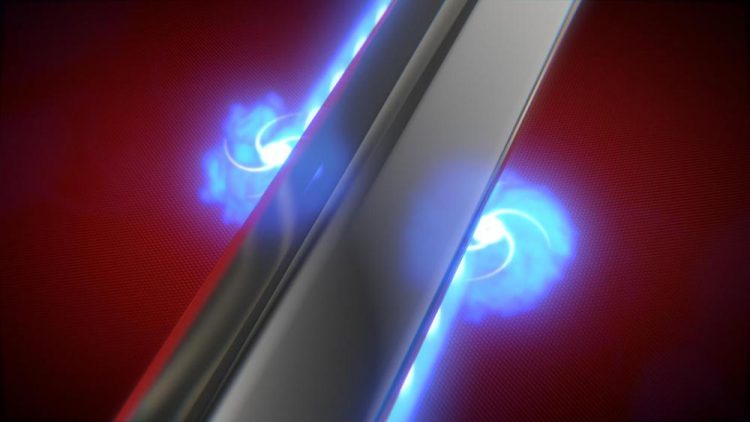Researchers from TU Delft combine spintronics and nanophotonics in 2-D material

From spintronics to photonics in a 2D-material Credit: TU Delft/Scixel
Researchers from the Kavli Institute of Nanoscience at TU Delft, working with the Netherlands Organisation for Scientific Research's AMOLF institute, have now found a way to convert the spin information into a predictable light signal at room temperature.
The discovery brings the worlds of spintronics and nanophotonics closer together and might lead to the development of an energy-efficient way of processing data, in data centres, for example. The researchers have given an account of their results in Science.
The research revolved around a nano-construction consisting of two components: an extremely thin silver thread, and a 2D material called tungsten disulfide. The researchers attached the silver thread to a slice of tungsten disulfide measuring just four atoms in thickness. Using circularly polarised light, they created what are known as 'excitons' with a specific rotational direction. The direction of that spin could be intitialized using the rotational direction of the laser light.
Original state
Excitons are actually electrons that have bounced out of their orbit. With this technique, the laser beam ensures that the electrons are launched into a wider orbit around a positively charged 'hole', in much the same way as a hydrogen atom. The excitons thus created want to return to their original state. On their return to the smaller orbit, they emit an energy package in the form of light. This light contains the spin information, but it emitted in all directions.
To enable the spin information to be put to use, the Delft researchers returned to an earlier discovery. They had shown that when light moves along a nanowire, it is accompanied by a rotating electromagnetic field very close to the wire: it spins clockwise on one side of the wire, and anti-clockwise on the other side. When the light moves in the opposite direction, the spin directions change too.
So the local rotational direction of the electromagnetic field is locked one-to-one to the direction with which the light travels along the wire. 'We use this phenomenon as a type of lock combination,' explains Kuipers. 'An exciton with a particular rotational direction can only emit light along the thread if the two rotational directions correspond.'
Opto-electronic switches
And so a direct link is created between the spin information and the propagation direction of the light along the nanowire. It works almost perfectly: the spin information is 'launched' in the right direction along the thread in 90% of cases. In this way, fragile spin information can be carefully converted into a light signal and transported over far greater distances. Thanks to this technique, which works at room temperature, you can easily make new optoelectronic circuitry. Kuipers: 'You don't need a stream of electrons, and no heat is released. This makes it a very low-energy way of transferring information.'
The discovery clears the way for combining the worlds of spintronics and nanophotonics. Kuipers: 'This combination may well result in green information processing strategies at the nanoscale.'
###
In a separate study published in the same issue of Science today, other researchers from the Kavli institute of Nanoscience at TU Delft also found a way to transfer spin information to photons. Read the press release about this related research here.
Media Contact
All latest news from the category: Physics and Astronomy
This area deals with the fundamental laws and building blocks of nature and how they interact, the properties and the behavior of matter, and research into space and time and their structures.
innovations-report provides in-depth reports and articles on subjects such as astrophysics, laser technologies, nuclear, quantum, particle and solid-state physics, nanotechnologies, planetary research and findings (Mars, Venus) and developments related to the Hubble Telescope.
Newest articles

Superradiant atoms could push the boundaries of how precisely time can be measured
Superradiant atoms can help us measure time more precisely than ever. In a new study, researchers from the University of Copenhagen present a new method for measuring the time interval,…

Ion thermoelectric conversion devices for near room temperature
The electrode sheet of the thermoelectric device consists of ionic hydrogel, which is sandwiched between the electrodes to form, and the Prussian blue on the electrode undergoes a redox reaction…

Zap Energy achieves 37-million-degree temperatures in a compact device
New publication reports record electron temperatures for a small-scale, sheared-flow-stabilized Z-pinch fusion device. In the nine decades since humans first produced fusion reactions, only a few fusion technologies have demonstrated…





















